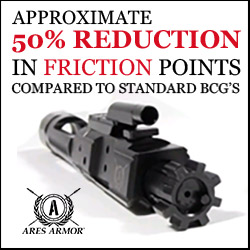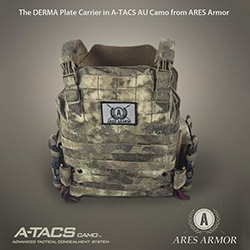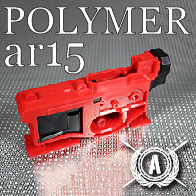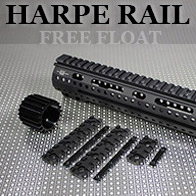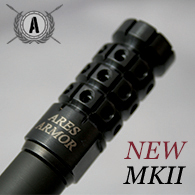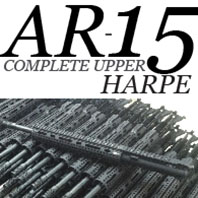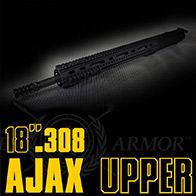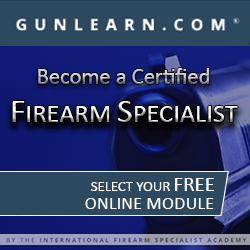From CQB to nighttime animal control to extreme long range shooting, having the right optic on your AR makes all the difference.
Brad Fitzpatrick
I’m often asked which optic is the best for an AR, and that’s a topic I love because it offers me a platform to explain just how versatile black guns can be. AR carbines and pistols are light and compact, and that makes them perfect for close-quarters defensive work. In addition, they’re great for mid-range shooting, everything from 20 to 200 yards. But the reach of the AR extends far beyond that distance, out to 800 or even 1,000 yards. They’re great for hunting, home defense, and competition shooting. In short, your AR can do just about anything.
That is, if you select the right optic. There are a bunch of choices for AR shooters, but here’s a quick guide to some of the best scopes, lasers, and reflex sights based on what you plan to do with your rifle.
Reflex sights are a great option when shooting CQB-style or when on the move.
Close Range: For everything out to 100 yards, I like a reflex sight. That’s because they’re compact, lightweight, and they offer a clear both-eyes-open aiming point. The red dot is the fastest and most flexible sight for shots out to 100 yards, and they perform well even beyond that range, but if the bulk of your shots in the field or in competition are closer than a hundred steps, a reflex or red dot is your best option because magnification can be a hindrance (ever tried to take a snapshot when your scope was on 9x?) On a recent helicopter hog eradication shoot in Texas I used the Trijicon SRS (sealed reflex sight) with great results, but the company’s newest offering, the MRO, is another superb choice. Likewise, Burris’s AR-F3 combines a lightweight, durable FastFire III optic with their durable AR-F3 mount, which allows the sight to sit low and has metal “wings” that protect it. For budget reflex sights, it’s hard to beat the economical Bushnell First Strike, which offers an easy-to-see 5 MOA dot. One other option is a laser sight like the Crimson Trace MVF-515, which has a light and laser. It’s great for moderate-range shooting, and if you have night vision equipment you can opt for the IR module.
Moderate Range: I consider moderate range anything from muzzle tip to a quarter mile. As previously stated, if my shots are under a hundred, I want a light, compact, reflex sight for fast shooting. If, however, I want to extend my rifle’s range I want the option of magnification. One of the best options is EOTech’s Holographic Hybrid Sight II, which combines an EXPS-2 holographic sight with a G33.STS magnifier. The EXPS-2 holographic sight offers all the benefits of a reflex sight, and you’ve got the option (the magnifier swings in and out of the line of view as needed) for instant 3X magnification. If you’re looking for a standard optic, pay attention to low-power variables like the Trijicon VCOG in 1-6×24. I like this sight a lot because it offers a first focal plane reticle (which maintains constant size relative to the target and aids in aiming) and it doesn’t require scope mounts. Leupold’s Mark AR MOD 1 1.5-4×20 is another great option, and it features a compact, durable design with Firedot illumination and stadia lines. Yet another great (and affordable) option is Nikon’s M 223 1-4×20 BDC 600 scope, which has holdover points out to 600 yards for 55 grain polymer-tipped loads. It also has zero reset turrets, another bonus when shooting at various ranges.
A large main tube body is important for light transmission, helping you hit that gong way downrange.
Long Range: The long-range AR is really a specialized platform, and if you are serious about banging steel way downrange you need to invest in top-shelf glass. For starters, a 30 or 34 mm main body tube makes sense; a good 30mm scope gives you more internal adjustment capabilities for making longer shots, and 34s are better still. You can select either MOA or Milrad reticles based on how you prefer to shoot, but be sure that you get good, clear glass. Other options like a zero-stop are nice when you’re trying to hit a target at a great distance.
Burris’s Veracity has performed well for me, and it’s available in magnification ranges from 2-10 to 5-25. The Veracity has Progressively Thick Crosshairs, which narrow toward the center for rapid target acquisition at higher magnification. The Leupold VX-6 offers extremely clear glass, 30mm tubes, a 6x zoom ratio and T-MOA reticle, which has 1 MOA stadia lines and can be used for range estimations. The VX-6 line is available in a variety of magnifications, from 3-18x all the way to 7-42x! Nightforce’s ATACR line is also excellent, with first focal plane reticles, .25 MOA/.1 Mil-Rad click values and magnifications ranging from 4-16x to 5-25x.


